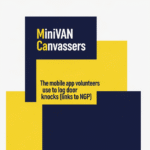How Much Money Do I Need To Run For Office?
What Does It Cost to Run for Political Office?
Running for political office is an exciting and impactful way to serve your community and make a difference in your country. However, one of the first questions many potential candidates ask is, “How much money do I need to run for office?” The answer to this question varies widely depending on the office you’re aiming for, the competitiveness of the race, and the size of the district.
From local school boards to U.S. Senate races, the financial demands of campaigning can be significant, but there are ways to budget effectively. In this article, we’ll break down the costs of running for office at various levels and provide tips on how to manage your campaign expenses.

The Cost Spectrum of Political Campaigning
The cost of running for political office can vary dramatically depending on the level of government and the competitiveness of the race. At the most basic level, local elections are often more affordable, with costs running from hundreds to tens of thousands of dollars. However, as the level of government rises, so too does the price tag. Running for state or federal offices requires far more funding due to larger constituencies, higher media costs, and the need for more extensive outreach.
Local offices like city councils or school boards are typically the least expensive. However, as you move up to state legislative offices or U.S. Congressional seats, the costs increase substantially. High-profile U.S. Senate races, for example, can cost tens of millions of dollars, particularly in competitive districts. Understanding the general campaign costs for political office will help you determine how much money you need and where to allocate it effectively throughout your campaign.
1. Local Offices
Running for a local office, such as city council or school board, is often the most affordable way to enter politics. Typical costs include:
- Filing fees: Usually between 25 and 500.
- Campaign materials: Signs, flyers, and mailers can cost 500 to 5000.
- Digital ads: Social media and website expenses may range from 1,000 to 10000.
In smaller districts, campaigns can often be run on a shoestring budget, with total costs ranging from 500 to 20,000. To save money, focus on grassroots efforts like door-to-door canvassing, community events, and volunteer support. These strategies not only reduce costs but also help you connect with voters personally. By prioritizing these approaches, you can run an effective campaign without overspending.
2. State Offices
The cost of running for state legislature varies widely. According to the National Institute on Money in Politics, the average cost for a successful state House race is around $72,000, while a state Senate campaign can exceed $120,000. However, in highly competitive states, these figures can be significantly higher.
Candidates need to allocate funds for professional campaign staff, polling, advertising, and travel. TV and radio ads can quickly become a substantial expense, particularly in states with large districts.
Fundraising Tips
Successful state-level candidates often rely on individual donations, political party support, and fundraising events. Grassroots fundraising remains essential, but candidates may also seek endorsements from local organizations and labor unions to gain financial backing. Social media crowdfunding is another effective method for raising small-dollar contributions.
3. Federal Offices
Federal campaigns require a massive financial investment. Running for the U.S. House of Representatives costs an average of $2 million, while a Senate race can require upwards of $20 million. High-profile contests, such as the 2020 South Carolina Senate race, saw combined spending of over $130 million.
These campaigns involve significant expenditures on TV advertising, professional strategists, travel, and voter outreach. Digital marketing and large-scale fundraising events also contribute to the cost.
Fundraising Challenges
Federal candidates must meet strict campaign finance regulations and often rely on Political Action Committees (PACs) and Super PACs for funding. While individual contributions play a role, large donors and corporate sponsorships heavily influence federal races. Super PACs, which can raise unlimited funds, play a significant role in shaping election outcomes.
Fundraising Strategies for Candidates
Effective fundraising is key to running a successful campaign. In this section, we’ll explore strategies such as leveraging small donations, utilizing public financing programs, relying on volunteer support, and seeking in-kind contributions to help reduce campaign costs and maximize resources.
- Small Donations
One of the most effective fundraising strategies is collecting small donations from a large number of supporters. Platforms like ActBlue and WinRed help candidates raise funds through grassroots efforts. Email marketing and social media campaigns can encourage small-dollar contributions.
- Public Financing
Several states offer public financing programs that provide matching funds for candidates who meet specific requirements. These programs aim to level the playing field by reducing reliance on large private donations. Researching state-specific public financing options can be beneficial for first-time candidates.
- Volunteer Support
Hiring staff can be expensive, so many candidates rely on volunteers for canvassing, phone banking, and campaign event planning. Volunteers can significantly cut down costs while strengthening community engagement.
- In-Kind Contributions
Receiving non-monetary donations, such as office space, printing services, or event venues, can greatly reduce campaign expenses. Many local businesses and community members are willing to support candidates through in-kind contributions.
Run a Winning Campaign with Sutton & Smart's Proven Tactics
At Sutton & Smart, we provide specialized courses designed to equip you with the knowledge, tactics, and strategies needed to run a successful political campaign. Whether you’re a first-time candidate or looking to expand your political career, our courses cover everything from fundraising tips to effective community engagement. In addition, we offer ongoing community support to help you navigate the complexities of running for office. With our expert guidance, you’ll gain the tools to maximize your campaign’s impact while staying within budget.
Ready to take the next step? Join us today and start preparing for your political journey!
Conclusion
Running for office is a significant financial commitment, but with the right planning and strategies, it’s within reach. Whether you’re running for a local, state, or federal office, understanding the costs and exploring fundraising options will help you build a successful campaign.
From grassroots organizing to leveraging social media, there are countless ways to maximize your impact without overspending.
Ready to run for office?
Start budgeting and fundraising today! For expert guidance and tools to launch your campaign, visit Sutton and Smart and explore our resources designed to help candidates like you succeed.

Jon Sutton
An expert in management, strategy, and field organizing, Jon has been a frequent commentator in national publications.
Author | Partner





